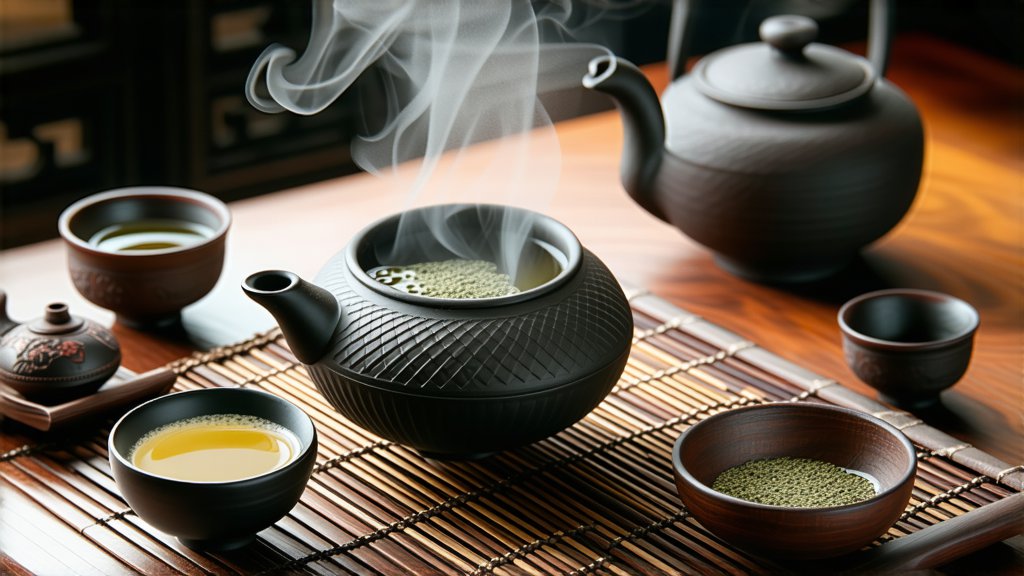
Pu'er tea, hailing from the rich and diverse landscapes of Yunnan Province in southwestern China, stands as one of the most revered and distinctive members of the dark tea family within the vast universe of Chinese teas. Its unique aging process, coupled with its deep-rooted history, complex flavors, and reputed health benefits, has captivated tea enthusiasts worldwide for centuries.
Historical Background
The origins of Pu'er tea trace back over a thousand years to the Tang Dynasty (618-907 AD), with its prominence solidifying during the Song Dynasty (960-1279 AD). However, it wasn't until the Ming Dynasty (1368-1644 AD) that Pu'er tea began to be produced and traded in its current form. The name "Pu'er" is derived from the town of Pu'er in Yunnan, which historically served as a major hub for tea trading along the ancient Tea Horse Road—a network of trade routes connecting China's tea-producing regions with Tibet and other parts of Asia.
Types of Pu'er Tea
Pu'er tea is broadly categorized into two main types based on processing methods: raw (Sheng) Pu'er and ripe (Shou) Pu'er.
-
Raw (Sheng) Pu'er: This type undergoes minimal processing after picking. The leaves are sun-dried or pan-fired, then compressed into various shapes such as cakes, bricks, or tuocha (nestles). Raw Pu'er is known for its potential to improve in flavor and aroma over time through a natural fermentation process called 'wet piling' when stored under appropriate conditions. It starts off with a more vibrant, astringent taste that mellows and deepens with age.
-
Ripe (Shou) Pu'er: Invented in the mid-20th century, ripe Pu'er undergoes a controlled fermentation process called 'wo dui', where piles of loose-leave tea are kept moist and warm for several weeks to accelerate aging. This results in a smoother, mellower tea with earthy, woody notes even when young. Ripe Pu'er is often enjoyed sooner than raw Pu'er due to its immediate drinkability.
Production Process
Both types of Pu'er tea share some common steps in their production but diverge significantly in post-harvest treatment:
- Picking: High-quality leaves and buds are carefully handpicked, typically from old-growth tea trees or ancient arboreal tea gardens.
- Withering & Kill-Green: Freshly picked leaves undergo a brief period of withering followed by either sun drying or pan firing to halt oxidation.
- Rolling & Shaping: Leaves are rolled to release juices and shape them before being left whole or broken according to desired product specifications.
- Drying & Sorting: Rolled leaves are dried and sorted based on size and quality.
For raw Pu'er, the next step involves compressing the sorted leaves into molds and allowing them to age naturally over time. For ripe Pu'er, the sorted leaves enter the 'wo dui' fermentation process before compression.
Appreciating Pu'er Tea
To truly appreciate Pu'er tea, one must engage in a mindful tasting ritual that encompasses all sensory aspects: sight, smell, taste, and touch. Here’s a guide to savoring this exceptional brew:
-
Preparation: Start by selecting a high-quality Pu'er tea cake or brick. Use a pu'er knife or pick to flake off small pieces of the compressed tea, ensuring you include both older outer leaves and younger inner leaves for balance.
-
Warming the Pot: Rinse the teapot and cups with hot water to warm them up and cleanse any residual flavors.
-
Steeping: Place the tea flakes into the preheated teapot. For raw Pu'er, use water just off the boil (around 95-100°C/203-212°F); for ripe Pu'er, slightly cooler water (around 90-95°C/194-203°F) works best. Steep for about 5-10 seconds initially, adjusting subsequent steeps based on personal preference and the tea's age.
-
Aroma: Before taking a sip, inhale deeply to capture the evolving fragrances released by the tea. Young sheng Pu'ers may exhibit fresh, floral, or vegetal scents, while aged ones develop deeper, earthier aromas. Ripe Pu'ers often exude sweet, woody, or mushroom-like notes.
-
Tasting: Take small sips, allowing the tea to spread across your palate. Notice the initial astringency or bitterness that gives way to complex layers of sweetness, umami, and a long-lasting aftertaste. Assess the mouthfeel—whether it's silky, creamy, or robust.
-
Visual Appreciation: Observe the color of the liquor, which ranges from bright amber for young sheng to dark red-brown for aged pu'ers or ripe pu'ers. Admire the unfurled leaves at the bottom of the pot; they tell stories of transformation through their textures and colors.
-
Repeat: Pu'er tea is resilient and can be steeped multiple times, each infusion revealing new facets of its character. Adjust steeping times progressively longer to explore its depth.
Health Benefits
Beyond its enchanting flavors and cultural significance, Pu'er tea has been celebrated for centuries in traditional Chinese medicine for its purported health benefits. Rich in antioxidants, polyphenols, it is believed to aid digestion, support cardiovascular health, regulate blood sugar levels, and promote weight management. Additionally, regular consumption of Pu'er tea may contribute to improved gut flora due to its probiotic properties resulting from the fermentation process.
In conclusion, Pu'er tea represents not just a beverage but an experience—a journey through time and tradition that connects drinkers to the ancient tea-growing regions of Yunnan. Its versatility in flavor profiles, adaptability to various brewing methods, and potential health advantages make it a cherished treasure among tea connoisseurs globally. Whether you're seeking a moment of tranquility amidst a busy day or delving into the intricate world of tea appreciation, Pu'er offers a profound and rewarding exploration.